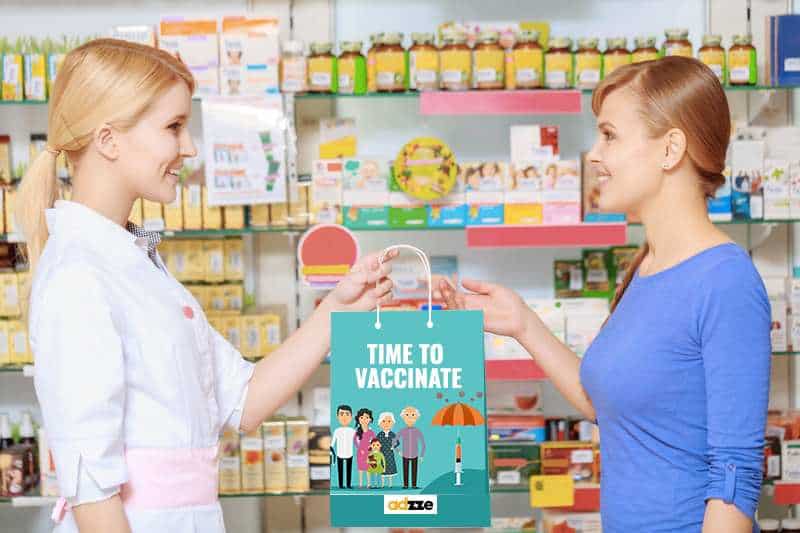Bag Advertisement: Learn more how the cost per 1,000 impressions of Prescription Bag compares with Traditional Media
Bag Advertisement: challenges in measuring CPM for OOH
CPM is a widely used KPI that defines the cost per thousand advertisement impressions. Commonly used for digital, cost per impression is applied to assess the cost-effectiveness and profitability of online advertising. Its been broadly attempted to measure ROI for OOH segment and to understand how ROI models interpret OOH contributions. Although several techniques exists for OOH and key metrics as Daily Effective Circulation (DEC), ie. number of vehicles and pedestrians that pass a billboard per day and Opportunity to Contact (OTC), i.e. how many people could walk past and see your outdoor advert, it is challenging to precisely measure how many impressions a billboard generates and the level of brand lift that it will trigger in the audience.
The unconventional use of Prescription Bags and its CPM measurement
Advertisement on prescription bags is a segment of ambient advertising: a concept based on placing advertisement on unusual items or in unusual places you would not normally see an ad. The logo and message of the advertiser are printed on pharmacy prescription bags and distributed to the pharmacy stores the client selected. CPM measures can be calculated based on the exposure of the ad to the potential target audience.
An unique bag advertisement provides on average 15 min of exposure and extended views when the patient takes the bag home. Usually each pharmacy store distributes on average 5,000 prescriptions bags/month, this generates an estimated 1.5M of impressions. It is important to note that the impressions will be generated from the same viewers.

Several variables are involved while designing an advertising program: reach, impressions, the context of the message, brand lift/recall rate. With the emerging digital era, the advertising industry has been transforming and new sales drivers triggered from new KPIs. Billboards might offer larger reach and higher number of impressions than Ambient Advertising but short attention span and therefore lower brand lift. People will tend to remember less the ad message in a crowded environment and under stress situation (e.g. driving).
With Prescription Bag Advertisement, the audience tends to immediately connect with the healthcare message as they are with their mind in their health while picking up their prescription. This provides an enhanced assimilation of the advertisement. The audience is typically in a relaxing environment inside the pharmacy store changing for positive their perception of the message. In addition, the prescription bags are handled by respected healthcare professionals providing an exceptional exposure and positive impact on the Brand.
Billboard costs
The costs of billboards depend on format, circulation, demographics, and impressions. Traditional billboards cost $14,000-20,000/month in larger markets. With the cost of billboard/month, the advertiser can place its message on 40,000 coffee sleeves to 40 different coffee shops during the same period of time.
There is an unproven assumption that billboards are effective. In fact, several publications demonstrated the lack of targeting and tracking, low engagement with the target audience, high costs, low ROI and in many cases the issue of visual pollution and low brand recall. The targeting issues very often are addressed with alternative approaches as mobile billboards, digital OOH, ads on trucks and ads in places people don’t expect as flags, backpacks, inflatable objects, gas pump and balloons.
Conclusion
In-the-Hand Advertising is an emerging concept of ambient marketing that replies on place ads on vehicles that consumers touch at daily basis as: pizza boxes, bar coasters, coffee cups, door hangers, hotel key cards, shopping bags, dry cleaner hangers.
The benefits of advertising in the healthcare industry has been demonstrated by research studies that correlated the advertising spend of hospitals to increase of the ratings of the perceived healthcare quality by patients (Huppertz, et al, 2017).
For agencies and Brands, it is important to find the right advertising vehicle that connects with the audience instead of sending multiple unnoticed messages. That is the classical scenario that quality matter more than quantity.
Sources:
Huppertz, 2017. Hospital Advertising, Competition, and HCAHPS: Does It Pay to Advertise? Health Serv Res. 2017 Aug; 52(4): 1590–1611






